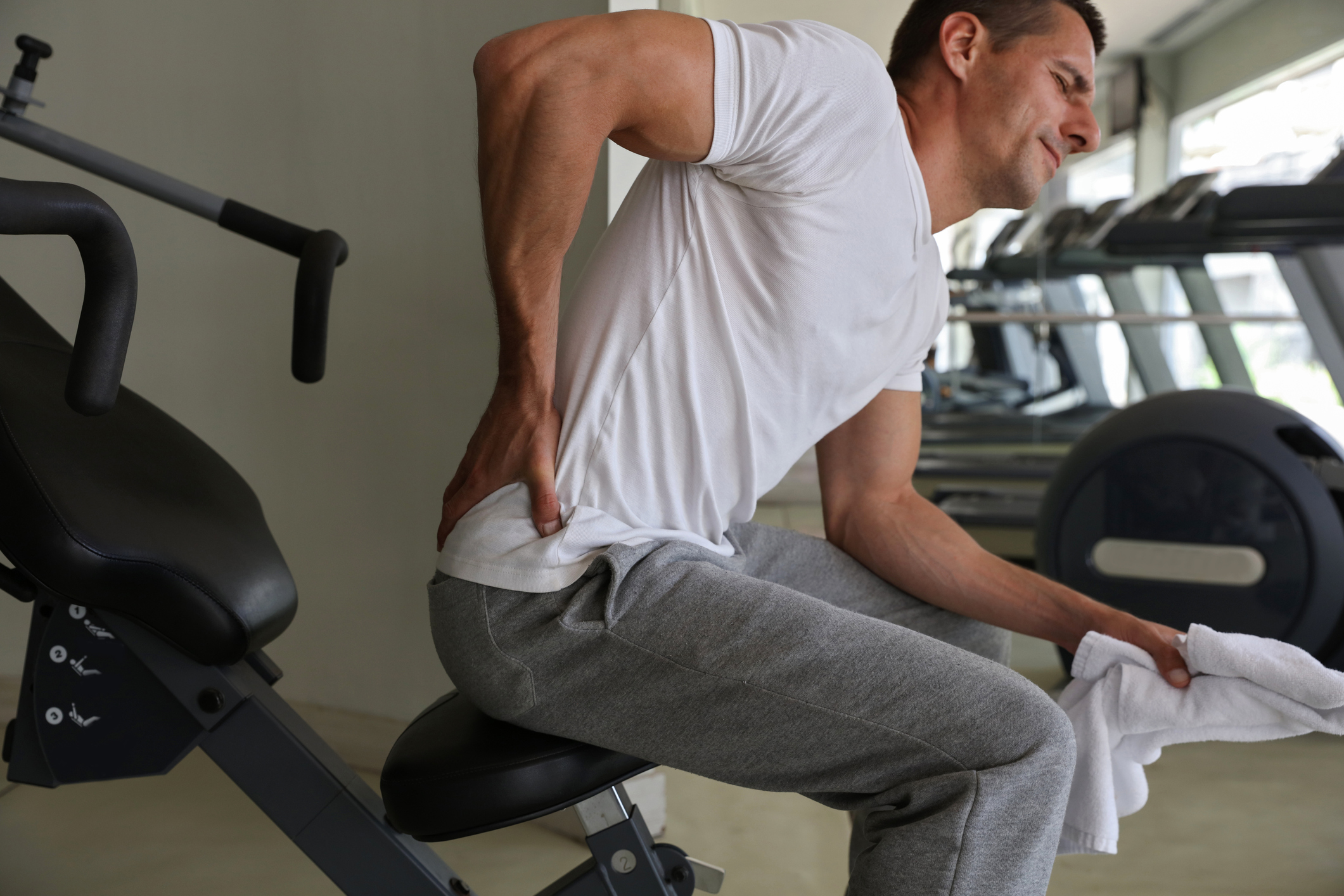Low back pain can often be a consequence of participating in sports. Certain motions can put a strain on the muscles in the lumbar spine (low back). Overuse of the muscles also contributes to pain. Low back pain negatively impacts the enjoyment of physical activities by limiting playing time. Other body parts can be strained if the pain causes a modification in the way we walk, lift, swing, or throw.
Factors affecting low back pain
Several other factors may contribute to low back pain including being overweight, having poor posture, misalignment of the vertebrae, arthritis in the spine, and a herniated disc. Sometimes the pain can be traced to a specific event or action. In other cases, repetitive minor injuries can lead to chronic pain. Strenuous activity puts stress on the spine when twisting, turning, and bending. Low back injuries are more common in certain sports including running, golf, tennis, weightlifting, rowing, gymnastics, and football.
Lumbar spine anatomy
The low back, or lumbar spine, is made up of five vertebrae, L1 to L5. These vertebrae are larger in size because they are the main weight bearing part of the spinal cord. The vertebrae are separated by discs which act as shock absorbers. Muscles give support, tendons connect muscles to bone, and ligaments are bands of tissue that attach bone to bone. These parts work together to stabilize the spine.
Types of low back injuries

Injuries to the soft tissues from over extension of the muscles may be strains or sprains. These are not usually serious and are often treated at home with rest, ice therapy, and over-the-counter anti-inflammatory pain medications like ibuprofen and naproxen.
Herniated discs occur when a tear in the exterior of the disc allows the softer, jelly-like center to push through. If a nearby nerve becomes irritated, symptoms can include leg or buttocks pain, numbness, tingling, and muscle weakness. Treatment options may include rest, pain medication, and physical therapy.
A compression fracture of a vertebra may happen due to trauma such as a fall or simply as a result of spinal aging and weakness. A fracture may heal with conservative treatments, or surgery may be necessary. Minimally invasive surgeries include vertebroplasty and kyphoplasty.
Diagnosis
The patient should receive a full neurological examination. Diagnostic tests may include x-rays, a CT scan, or an MRI. Treatment of a low back injury will depend on the specific diagnosis.
The physicians at Atlanta Brain and Spine Care are experienced in diagnosing and treating low back pain. Contact us today to schedule an appointment with one of our doctors to discuss your treatment options.


